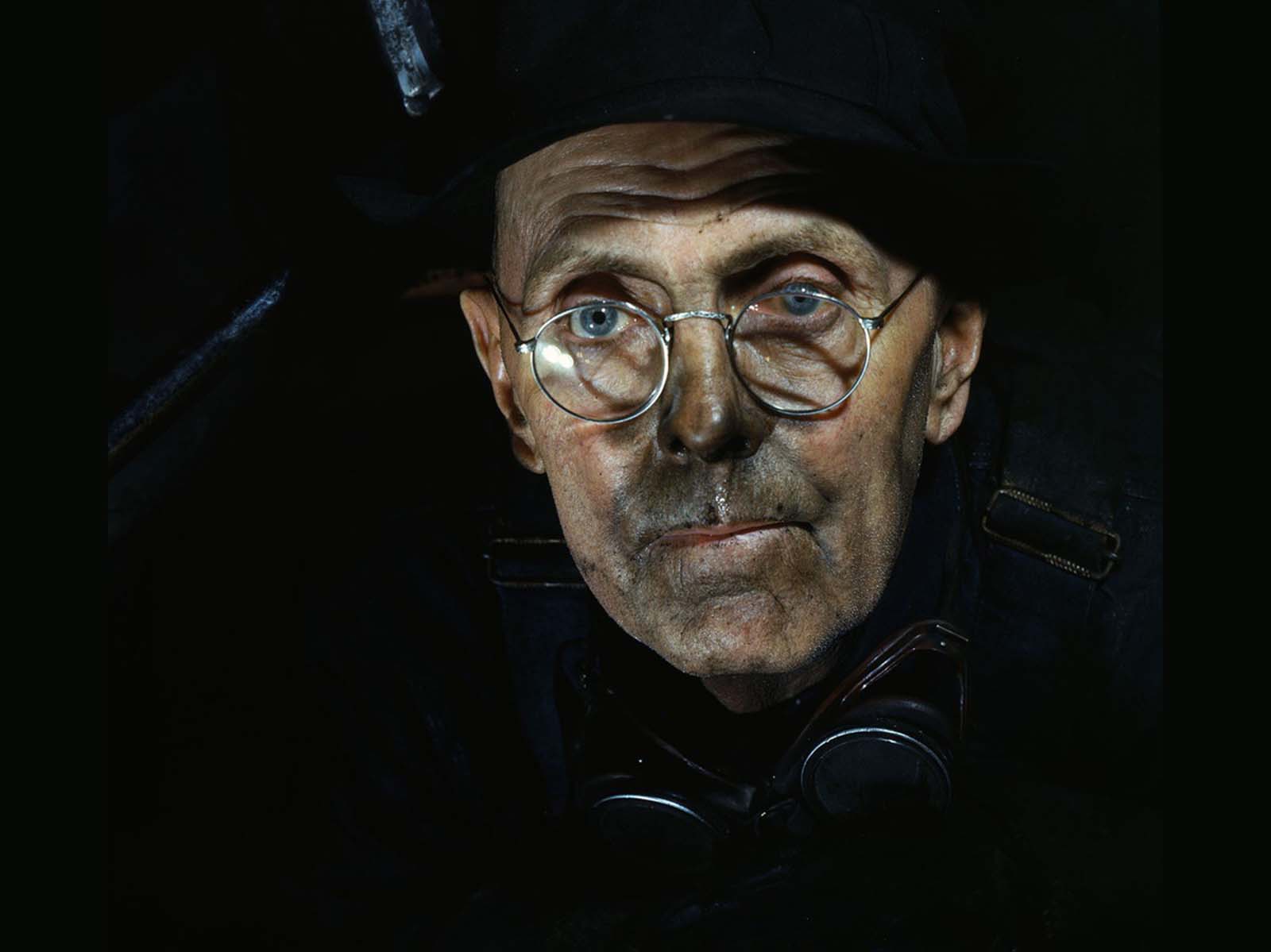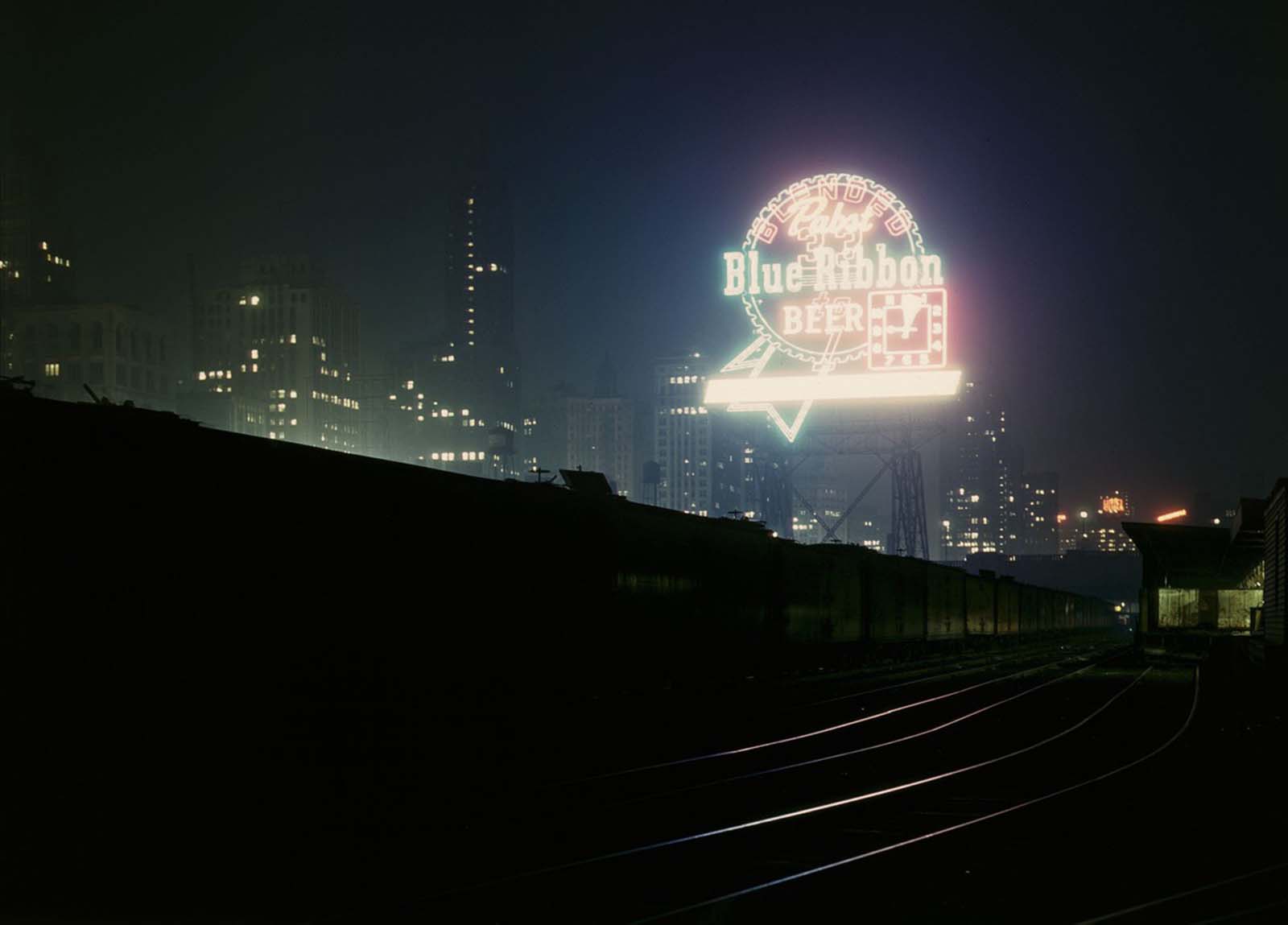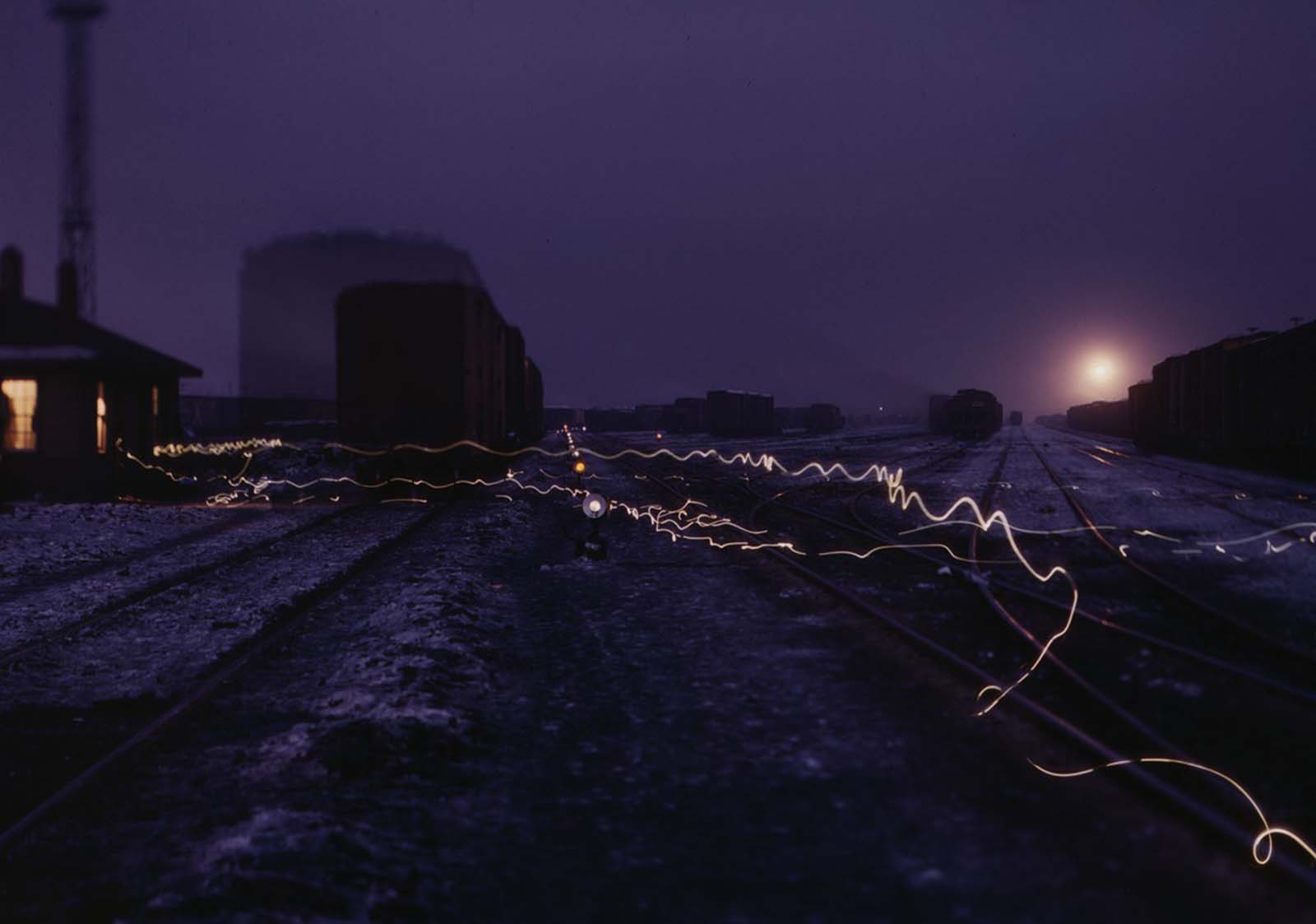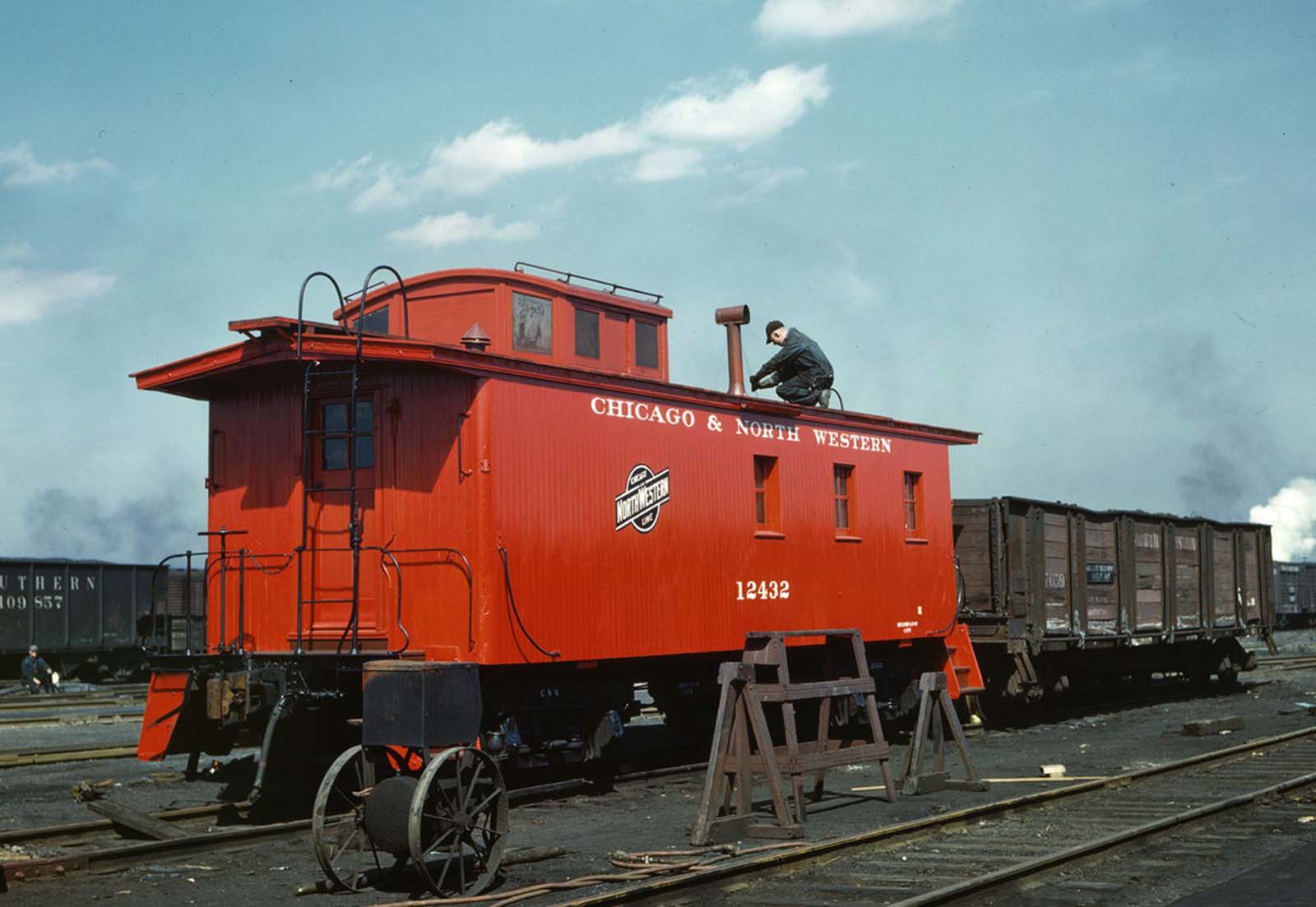As a Farm Security Administration photographer, Jack Delano spent time documenting life in the Chicago rail yards during the war years. These photographs were taken on Kodachrome color transparencies.
Chicago has more lines of track radiating in more directions than any other city in the United States. Chicago established its first rail connection in 1848 to connect the Windy City with the lead mines of Galena, Illinois. Detroit was later connected to Cleveland, Cincinnati, New Orleans, St. Louis, Kansas City, Omaha, and St. Paul. In addition to being the nation’s most important interchange point for freight traffic, Chicago is the hub of Amtrak, the intercity passenger railroad.
At the dawn of the 20th century, more than 30 interstate routes branched out from the city, making it easier to access raw materials and markets, contributing to the city’s rapid growth. Furthermore, Chicago was the terminus of all major railroad lines; passengers, raw materials, and finished goods were transported between these lines in the city, contributing to an extraordinary development of hotels, restaurants, taxicabs, warehouses, and rail yards. Railroads played a key role in Chicago’s grain marketing and meatpacking industries as a grain and livestock haulers. Trade encouraged the development of ancillary industries such as steel rails and railroad equipment, shipbuilding, packaging, printing, and hotels and restaurants.
In the 1960s, the Chicago Loop contained six major rail terminals for intercity rail passenger traffic. When traveling between the East and West Coasts, many passengers had half a day to spend in Chicago between trains and took advantage of the time by sightseeing. With the advent of jet airlines, intercity rail passenger travel declined, eventually leading to the consolidation of remaining services under Amtrak in 1971.























